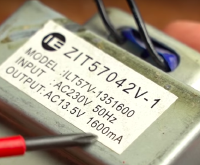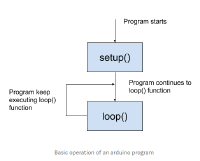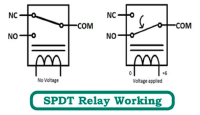Node MCU - ESP8266
Publish date: Sep 13, 2019
Last updated: Apr 22, 2020
Last updated: Apr 22, 2020
IMAGE GALLERY (6)
- Microcontroller
60MHzwith64KBmemory,96KBdata- Asynchronous event-driven programming model
- Lua Flash Store (LFS) support
- Lua is designed primarily for embedded use in applications
- enables to create Lua applications with up to 256Kb Lua code and read-only constants executing out of flash. All of the RAM is available for read-write data!
- Operating voltage
5V - Home Automation
- Version 2
- Documentation
- WiFi Library
- 2 LEDs
D0inboardD4on ESP board
- can have only 1
main.cppfile *
- Firmware
- provides the low-level control for the device’s specific hardware. Firmware can either provide a standardized operating environment for the device’s more complex software (allowing more hardware-independence), or, for less complex devices, act as the device’s complete operating system, performing all control, monitoring and data manipulation functions. Typical examples of devices containing firmware are embedded systems, consumer appliances, computers, computer peripherals, and others. Almost all electronic devices beyond the simplest contain some firmware.
- PWM
- Pulse Width Modulation
- Relay
- electromagnetic switch, could be AC/DC
- 3 terminals on output side
- NO - Normally opened
- COM - common
- NC Normally Closed - mostly shorted
- Energizing coil with power supply
- How does a rely work?
- Reduce short hazard
How to identify relay terminal when not marked on device?
Use Multimeter
COMandNCare connected, you will get continuityCOMandNOare close, no continuity

RTS (Request to Send) and CTS (Clear to Send)
- Flash the Image -
esptools.py sudo apt install python-serial- Image / Firmware
./esptool.py --port /dev/ttyUSB0 image_info ../nodemcu-master-15-modules-2019-09-13-20-57-17-integer.binsudo ./esptool.py --port /dev/ttyUSB0 write_flash 0x00000 ../nodemcu-master-15-modules-2019-09-13-20-57-17-integer.bin
- Uploading code to module
- Configure Arduino IDE
NodeMCU1.0(ESP-12E-module) - Platform.io in vsCode
- Configure Arduino IDE
Microcontroller vs Microprocessor
- Microcontroller is more specifc, Microprocessor is more general in use
# is serival device connected
ls /sys/class/tty/ttyUSB*
What is SERIAL port?1
- Logic Schematics
- Setting up the HArdware Rig
- Softwares part
- Choose/build Firmware/OS
- Write Application Software
- WiFi Manager
- when your ESP starts up, it sets it up in Station mode and tries to connect to a previously saved Access Point
- if this is unsuccessful (or no previous network saved) it moves the ESP into Access Point mode and spins up a DNS and WebServer (default ip 192.168.4.1) *
- Each test is a small independent program/firmware with its own
main(),setup()orloop()functions. - Test should start with
UNITY_BEGIN()and finish withUNITY_END()calls.
Controlling high voltage part from low voltage
- Operating voltage of CFL is
230Vand node is5V - Use Relay to act as a mediator b/w bulb and board
- Can turn ON/OFF using a pulse from microcontroler
- Scan WiFis
- Connect to a WiFi
- Print IP to connect to nodeMCU from network
- Host a simple HTTP server in nodeMCU
Footnotes
[^3] : https://github.com/nodemcu/nodemcu-devkit-v1.0/blob/master/NODEMCU_DEVKIT_V1.0.PDF






